#chenbao
Explore tagged Tumblr posts
Text



Blossoms In Adversity | the best.
#what's next?#are you going to leave it to my imagination?#I need an sp about these two#惜花芷#blossoms in adversity#cdrama#wang li na#character: bao xia#hou wei tao#character: chen qing#dorama#chenbao
44 notes
·
View notes
Note
hey so can we hear about that baatar sr lore? 👀
Lmao ok. Just bear in mind that this is all headcanons and silliness.
So, we don't know much about Baatar Sr, other than the fact that he was Zaofu's architecht and somehow bagged the bad bitch Suyin Beifong who then proceeded to wring the poor man dry. He is also acrophobic, and Toph doesn't like him.
Truly a treasure trove of information.

So we really have little clues from where he originates from. I personally took inspiration from his name, which is Mongolian, and means "hero" (which is funny, but might give us some insight on who his parents wished him to be). Due to this I always imagined he would come from some ethnic group inspired by Mongolian culture.
Though it is important to note that this is purely conjecture on my part, as this the origin of a name doesn't always mean much in the Avatarverse. For example, Katara's name seems to have roots in Arabic, despite her inspiration being rooted in native americans.
I think the most Mongolian inspirations we see in Avatar can be found in the Northern Water Tribe and the bordering areas of the Earth Kingdom, so I could see Baatar being born somewhere between the Chenbao province and the Taihua Mountains, not terribly far from the Northern Air Temple his daughter would one day head to to begin her Airbending training.

I personally like the idea of Baatar's parents being a pair of surly old lesbians so that is my personal headcanon. His mom's gay. My friend once said he has "raised by lesbians" vibes and that had become canon to me.
I like the idea of his mothers being members, or perhaps even leaders, of some nomadic group, herding livestock and acting as travelling merchants. Maybe Baatar was expected to take on leadership after his mothers, and that is why his name has such a grand meaning lol.
And while I think Baatar loves his tribe and has deep care for his culture, he's always wanted to do something else with his life. He found himself drawn to and fascinated by the bustling cities they would visit, and eventually began drawing up fantastical ideas for homes and settlements in his sketchbook/diary.

So, as a young adult, he finally takes the plunge and travels to Ba Sing Se, to study architecture. I think this would place a big strain on his relationship with his mothers, who wanted him to stay and eventually lead the tribe. Perhaps it would even lead to a few years of estrangement. Something for Baatar to have in common with Su lol
Baatar flourishes as an architect, but I think that once the intial excitement of building new things passes, he becomes disillusioned. Most of the people who hire him are upper ring citizens of Ba Sing Se, who either want him to replicate traditional buildings, or follow well established trends. His dreams of new creations and outlandish designs seem they will never have a chance to come to fruition.
But then he is sought out by Suyin, and she is wiling to back his creativity. And she, in some strange way, becomes his muse.

The city he designs is beautiful, sleek and elegant, yet practical. Just like her. He works closely with Su, and they become fast friends. She tells him about her adventures, and he incorporates aspects of her stories into his designs. And, as the city of Zaofu begins to bloom upon the map, so does Su and Baatar's love for each other.

I think they find solace in each other, two people isolated from their families, carving out their own place in the world and starting a family.
I don't think Baatar's mothers would care for the wedding, but they might show up at the news of grandbabies. While they're not the biggest fans of their son's weird metal city, they do like Su a whole lot! It is a mystery to them how their loser son bagged this baddie.
They're very loving grandmothers, however, they wish their grandbabies could grow up "properly"- travelling across the icy tundra up north. This has led to occasional attempted babynapping, as 3 year olds fit in saddle bags exceptionally well.
While I think that Baatar doesn't want his children leaving Zaofu quite yet, and doesn't miss his old life, I think he makes sure his kids know the basics of camping, and even made sure they all know how to ride, just for old times sake.
And while sometimes he reminisces fondly about his nomadic childhood, I don't think Baatar misses the life. He loves the home he built for his wife and family, his pride and joy is in creation, and in the life he designed alongside Suyin.
#i certainly have more on baatar sr here. but that's his backstory that i made up#beifong brainrot#baatar sr#baatar#sutar#suyin beifong#avatar#legend of korra#tlok#the legend of korra#avatar the legend of korra#atlok#lok
18 notes
·
View notes
Text
Ancient Chinese relics
Four-ram Zun
Early bronzes of the late Shang Dynasty. It belongs to ritual utensils and sacrificial items.
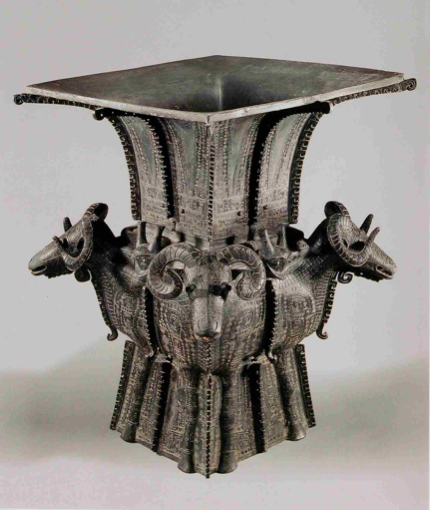
Terracotta
Terracotta Army (Terracotta Army; Terra-cotta Figures; Soldier and Horse figures) is a category of ancient tomb sculpture. In ancient times, human martyrdom was practiced, and the slave was an accessory of the slave owner during his lifetime, and the slave had to be buried for the slave owner after the death of the slave owner, which was a funeral object. Terracotta warriors and horses are funerary objects made in the shape of terracotta horses (chariots, war horses, soldiers).
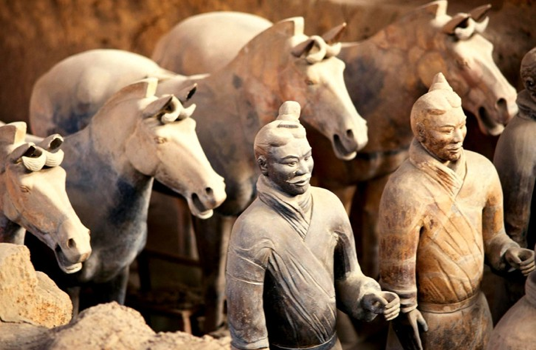
Yuan blue and white Guiguzi descending the mountain picture jar
The blue and white pattern is painted with imported cobalt material, which is divided into four layers, the first layer of the neck is decorated with water ripples, the second layer of the shoulder is decorated with entwined branch peonies, the third layer of the abdomen is the theme of "Guiguzi descending the mountain", and the lower part of the fourth layer is the deformed lotus petal pattern painted with Chenbao, commonly known as "eight big yards". The theme picture depicts the story of Sun Bin's master Guiguzi, who agreed to go down the mountain to rescue Sun Bin and Dugu Chen, the famous generals of Qi who were trapped by Yan State, at the repeated request of Su Dai, the envoy of Qi State.

Sanxingdui Ruins Official
It has a history of 3,000 to 5,000 years, and is the ancient city, ancient country and ancient Shu cultural site with the largest range, longest duration and richest cultural connotation found in southwest China so far. The best-preserved eastern, western, and southern city walls and the inner city walls of Moon Bay. The Sanxingdui site is known as one of the greatest archaeological discoveries of mankind in the 20th century, showing that the Yangtze River Basin, like the Yellow River Basin, belongs to the mother of Chinese civilization and is known as the "source of Yangtze River civilization".
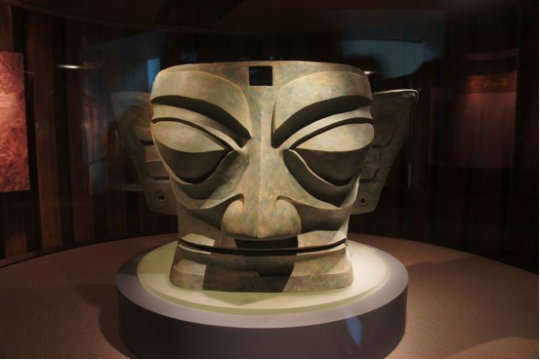
The history of the excavation of the Sanxingdui Ruins Official
The astonishing discovery of the Sanxingdui site began with a pit of jade tools that local farmer Yan Daocheng accidentally discovered in 1929 when he was driving water and digging a ditch. In the spring of 1931, the British missionary V· H· When Donnithorne heard the news, he approached the local garrison to help publicize the protection and investigation, and handed over the collected jade artifacts to the West China University Museum run by the Americans for safekeeping. According to V· H· In the spring of 1934, David C. Graham, director of the West China University Museum, and assistant Lin Mingjun formed an archaeological team, presided over by Luo Yucang, the magistrate of Guanghan County, to conduct a ten-day excavation near the discovery of jade artifacts in the Yan family. The excavation was rich in harvests, and according to these materials, V·H· Donnithorne compiled the "Hanzhou Excavation Briefing". Since the first excavation of the Sanxingdui site in 1934, the excavation has been stagnant for a long time.




In 1929, the discovery of the Sanxingdui Ruins Official began with a pit of jade tools that local farmer Yan Daocheng accidentally found when he was digging gou. From 1980 to 1981, the remains of Neolithic houses were cleaned up, and tens of thousands of specimens were unearthed, from which the "Sanxingdui Ruins Official" got its name. In 1982 and 1984, archaeologists carried out two excavations in the southwest and Xiquankan of the Sanxingdui Ruins Official, respectively, and found the remains of the latest Sanxingdui site. In July 1986, two major sacrificial pits in Sanxingdui were unearthed one after another, and a large number of unique and exquisite cultural relics attracted the attention of academic circles at home and abroad to the ancient Shu civilization in southwest China. In 1988, the State Council separately organized a review of the Sanxingdui Ruins Official, and it was announced as a national key cultural relics protection unit that year. From 1989 to 1995, Sanxingdui workstation has carried out test excavation of the "mound" outside Sanxingdui for 6 times, clarified the nature of its artificially built city wall, and delineated the scope of the ancient city of Sanxingdui with an area of 3.6 square kilometers. In 1992, the foundation stone of Sanxingdui Museum was laid. In May 1993, Sanxingdui Ruins Official relics were exhibited at the Olympic Museum in Lausanne, Switzerland. Although there is only one piece, it has caused a lot of repercussions in Switzerland and Europe. After that, European countries frequently invited Sanxingdui treasures to be exhibited in Europe. In 1997, Sanxingdui Museum was completed and opened, and its basic exhibition won the top ten exhibitions of national museums that year. In 2002, the Sanxingdui unearthed cultural relics bronze sacred tree and Yubianzhang were included in the "Catalogue of the First Batch of Cultural Relics Prohibited from Going Abroad (Territory) Exhibition" issued by the State Administration of Cultural Heritage. From 2012 to 2015, Sanxingdui archaeology discovered the foundation site of large houses in Qingguanshan and important cultural relics of many sections of the city wall, and the ancient city wall of Sanxingdui was enclosed. In April 2019, Sichuan issued the "Implementation Opinions on Strengthening the Reform of the Protection and Utilization of Cultural Relics", and the joint application of Sanxingdui and Jinsha sites as a World Heritage Site became a highlight.
On March 20, 2021, more than 500 important cultural relics have been unearthed in the six "sacrificial pits" newly discovered in the archaeological work of the Sanxingdui site, of which ivory was found in three pits. On March 21, the Sanxingdui archaeological "new" continued, and a ivory weighing more than 100 catties in the No. 4 pit was completely extracted; On April 12, a complete round-mouth square statue was successfully extracted from the No. 3 pit of Sanxingdui site, which is also the first complete round-mouth square statue unearthed by scientific archaeological excavation. On May 28, 2021, the Sichuan Provincial Institute of Cultural Relics and Archaeology announced that the excavation of 6 newly discovered "sacrificial pits" in Sanxingdui has yielded a lot of harvests. In addition, the Sanxingdui site will be declared a world cultural heritage in conjunction with the Jinsha site, and the Sanxingdui National Heritage Park will be accelerated.
1 note
·
View note
Video
youtube
Translations for Peng Xichen’s 《Quick Ask, Quick Answer》
Q1: When is the latest you would go to sleep at night? A: Usually I’ll sleep when I'm tired. Q2: Before going to sleep, what is the last thing you do ? A: Going on the phone. Q3: What is your favourite food to eat usually? A: If it's delicious then I like it all!
Q4: Recently, what kind of music are you listening to? A: I don't have time to listen to music nowadays other than our debut songs. Q5: Coming face-to-face with yourself in the mirror, what would you like to say? A: “*sigh* I’ve gained weight again.” Q6: What is your favourite phrase to say? A: “aiya~ so annoying *in an exasperated tone*” Q7: What are you scared of the most? A: Scared of the most? I don't like when I can't have a lie in so “You can't sleep anymore!” Q8: Use 3 words/phrases to describe yourself. A: 3 words? 暖/warm, err what else, 稳定/steady (I wasn't really sure here) *starts laughing* I don't know, this is too difficult. Q9: What do you want your fans to call you? A: 辰宝/ChenBao~ (meaning Chen baby or Chen treasure) (also there could be a play on words here as it also sounds like 城堡/Chengbao meaning castle) Q10: Using singing, what would you like to say to your fans? A: 对你爱爱爱不完~ *does gesture from the original MV* (The song is called 对你爱不完/Dui Ni Ai Bu Wan by 郭富城/Aaron Kwok) Fans’ Q&A: Q1: How old is Chen Chen~? A: 21 years old. Q2: Usually to what time do you practice (songs)? Have you been taking care of yourself? A: Er, usually it’s practice when you want to, we can practice at anytime. Q3: What can Chenbaos (this time indicating to her fans probably??) do to make you feel surprised? A: Sometimes when they send me Weibo messages, telling me... like when they say certain things *pause* make me feel really warm inside.
67 notes
·
View notes
Text
Xinjiang farmers turn fertile floppy-eared sheep breed into cash cow
Xinjiang farmers turn fertile floppy-eared sheep breed into cash cow
A sheep breeder in China’s far western region of Xinjiang has made headlines for turning down a multimillion yuan offer for one of his sheep, the Xinjiang Chenbao reports.
Mijit Abdurehim, a Uygur farmer from Kashgar, was offered 6 million yuan (US$926,000) for the Maigaiti sheep, a variety prized for its meat and ability to breed year round.
Abdurehim sold the sheep for 950 yuan soon after it…
View On WordPress
0 notes
Photo

Valentine day event Collaboration with duckhymne
Please go to our twitter for details! -- CX橙包 duckhymne
31 notes
·
View notes
Text
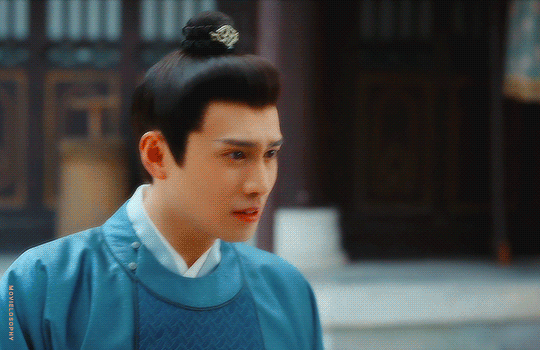
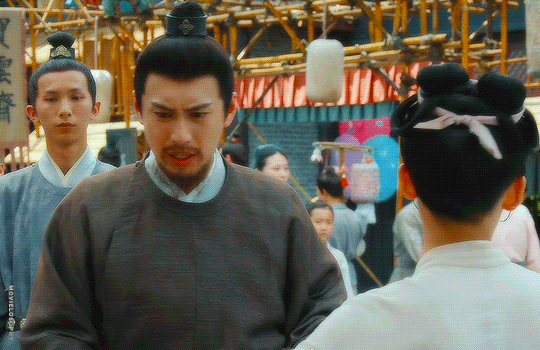
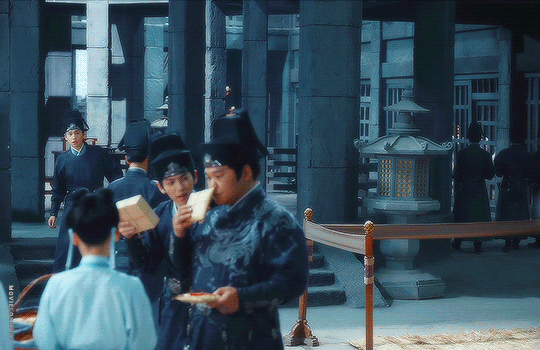

Blossoms In Adversity | Bao Xia, are you sure he's not into you?
#Every time this couple shows up#I can't help but giggle!#i keep on giggling#惜花芷#blossoms in adversity#cdrama#wang li na#character: bao xia#i love her playing supporting role#her mimics are hilarious#hou wei tao#character: chen qing#chenbao
27 notes
·
View notes